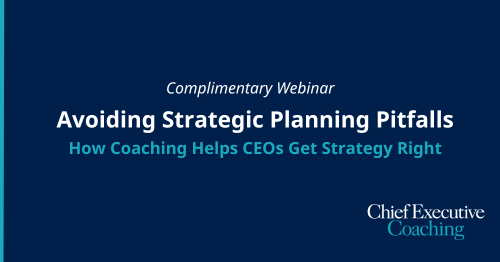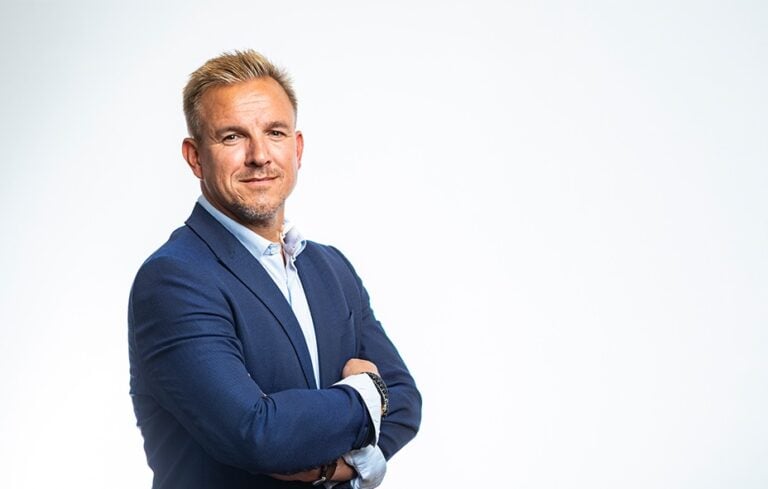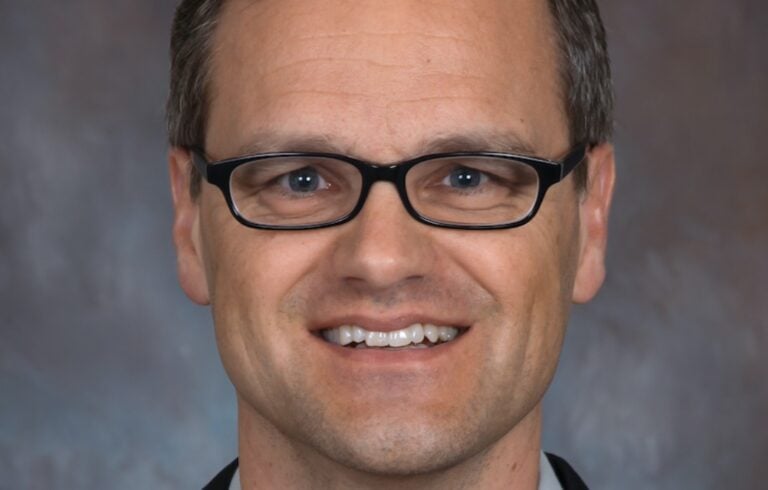
When Gordon Bethune and I became partners in 1994, we had what I called the “10th Place Airline.” We were tenth out of 10 in on-time performance, in baggage handling, in customer service. We’d had 10 presidents in 10 years and went bankrupt twice in 10 years. Other than that, everything was great. We implemented a plan in the fall of ’94, which still serves as our plan today, called the “Go Forward Plan,” because what’s behind you doesn’t do you any good. That plan had four basic components.
1. Fly to Win. This meant, stop doing things that lose money. A full 18 percent of the routes we were flying were cash negative; they weren’t covering the cost of the crews, fuel, equipment, or meals.
The fastest way to make money is to stop doing things that lose it. I got all the scheduling gurus together and I said, “Why do we fly from Greensborough to Greenville eight times a day when both customers are on the first flight?” And they said, “Well, it’s strategic.” And I said, “When was the last time it made money? How strategic can that possibly be?”
We’ve now been the fasting growing airline the last three years. Our stock went from $3 to $65 before coming down into the mid-$30’s-and that was with the last increase in the oil prices. But we’re still about 10-to-11 times in terms of our stock price. Our P&L went from a $650 million loss in ’94 to where we made in $770 million in ’98-almost a $1 billion swing in our P&L. But we basically got our market plan and started flying places that people want to go, which seems intuitive for an airline.
2. Fund the Future. I named this step “Fund the Future” because, as I told Gordon, if we didn’t get some funds, we weren’t going to have a future. Ultimately, we went from just about running out of cash in ’95 to where we closed the year with $1.6 billion worth of cash in the bank, plenty of liquidity. We’d taken our fleet from the oldest to the youngest in the industry with a very common fleet. We’ve invested a lot of money in our hubs to make them nicer places and built a lot of new facilities.
So we went from pawn shop interest rates, where you had to crawl on your belly over glass to get a nickel, to the right kind of financing. To show you the power of that, we have $7 billion of assets, and we lowered our interest rates by about 4 percent.
3. Make Reliability a Reality. That means having a product you can be proud of. We had the world’s most terrible product. So the first thing we wanted to do was get all the planes painted the same color on the outside, and with the same seats on the inside. Continental was a merger of seven different airlines, and I noticed that all they did when they got the planes was paint the tail. We did the same thing on food.
So we went through a process, and went from, on the Fortune 500 list of least admired companies, the 500th company on the list, to where we’ve won three J.D. Power Awards in four years as the best airline and Transatlantic and Transpacific Awards for the best business. So we do have a product we’re proud of.
4. Working Together. This means having a place where people like coming to work everyday. We had previously had the worst turnover in the industry and terrible employee morale, because the prior management’s way of getting ahead was to pit the pilots against the mechanics and the flight attendants against the gate agents, and let them all duke it out. And everybody hated management. It was just a terrible culture.
So we did a couple of things. We actually put in a profit sharing plan, where we gave them 15 percent of the profits. Of course, they didn’t believe that for a while, because we hadn’t had profits for 16 years. And then we told them that every month we were on time, we were going to give each person $65. We later modified it to second or third get $65 and $100 for first. So if the customer wins you win. We announced the program the 20th of January, 1995. We finished seventh in January in on-time, fourth in February, and first in March and April. We’ve been at the top of the on-time lists ever since.
At the same time Boeing came to evaluate our systems and said they were the worst they had ever seen. We couldn’t tell what was making money or what was losing money. The cost accountants were having a great time trying to take their favorite route and project that it was making money by shifting our fixed costs around. So we totally automated our system control.
In addition, we no longer have to fleet our airline based on what size airplane is on a route. Rather, we can shift airplanes around with the technology we have. If a route has more passengers on a particular day, we canswitch to a bigger airplane on a day’s notice. That’s worth about $100 million a year. And we have a flight profitability system that tells us what the profitability is on every flight, so we can make real-time management decisions on what to do.
As far as E-commerce, for us it’s really a way of changing distribution. Historically, our distribution cost as a percent of revenue has run about 21 percent of revenue, which is crazy. I can’t think of another business in a fairly commodity-driven product with that kind of distribution expense to sales ratio. We’re down to about 16 percent now, and
what the Internet’s allowing us to do is go down to 6 percent. If you take 10 percent of $9 billion dollars, that’s real money. That’s the E-commerce opportunity to us.
About 75 percent of our market are those businesses that actually want to compare prices and features across airlines. They want a piece of software allows them to enter the corporate discounts they have with each airline and can go anywhere, any time, and any class they want. And it should be an unbiased site.
We’re working with our competitors to put together a site like that-we’re calling it T2 for now. We’re doing it with Northwest, United, and Delta. It’s the first time competitors in our industry have worked together on something that’s good for the customer. It should be up by second quarter and will blow Travelocity and Expedia away.
Now, I learned a few lessons going through this process, and they’re very simplistic, which should give you a sense of my infancy in my own evolution through this.
#1: Commerce before E-commerce. You’ve got to figure out what drives your business and how to make it profitable in my mind before you try to layer E-commerce solutions on top of that.
#2: Drive E-commerce based on profit potential. We work very closely with our CIO. But the business executives, the CEO, the president, need to drive the project based on the business needs. And if the CEO and the president of the company are not involved in figuring out what you want to do in E-commerce you’re making a terrible mistake. You will get technologists that will come in and give you all the bits and bites and gigacrap that you don’t even understand or even want to know.
To me I ignore all that ’cause I’m not smart enough to take it in. If you can translate it to English I believe you probably know how to get it done. About once a week, I pull a little team together of myself, our CFO, our CIO, and a couple of people from our marketing organization, and we talk about where we’re at and the progress we’re making.
#3: You need a world class CIO. And you just cannot get by without that. I always say, give them the Transatlantic flight test, which is: would you want to sit next to this person on a flight across the Atlantic for eight hours? The answer, quite frankly, on a lot of technologists is, “not in my lifetime.” You’ve got to find one you really like, because you’re going to be spending a lot of time together.
#4. Experiment at home. On the weekends, I go home with a stack of Web sites to look at and play with. Our competitors’ sites, ours, other industry Web sites. You can learn a lot from competitors web sites.
#5. Sit down and work with competitors. This has been the biggest change in the airline industry-and in a very positive way. Because we lost control of our channel as an airline industry. We set up the computer reservation systems and gave them their own legs and they started raising prices on us consecutively. So you have to work together-and that’s a change that’s driven from the top.



Chief Executive Group exists to improve the performance of U.S. CEOs, senior executives and public-company directors, helping you grow your companies, build your communities and strengthen society. Learn more at chiefexecutivegroup.com.
0

1:00 - 5:00 pm
Over 70% of Executives Surveyed Agree: Many Strategic Planning Efforts Lack Systematic Approach Tips for Enhancing Your Strategic Planning Process
Executives expressed frustration with their current strategic planning process. Issues include:
Steve Rutan and Denise Harrison have put together an afternoon workshop that will provide the tools you need to address these concerns. They have worked with hundreds of executives to develop a systematic approach that will enable your team to make better decisions during strategic planning. Steve and Denise will walk you through exercises for prioritizing your lists and steps that will reset and reinvigorate your process. This will be a hands-on workshop that will enable you to think about your business as you use the tools that are being presented. If you are ready for a Strategic Planning tune-up, select this workshop in your registration form. The additional fee of $695 will be added to your total.

2:00 - 5:00 pm
Female leaders face the same issues all leaders do, but they often face additional challenges too. In this peer session, we will facilitate a discussion of best practices and how to overcome common barriers to help women leaders be more effective within and outside their organizations.
Limited space available.

10:30 - 5:00 pm
General’s Retreat at Hermitage Golf Course
Sponsored by UBS
General’s Retreat, built in 1986 with architect Gary Roger Baird, has been voted the “Best Golf Course in Nashville” and is a “must play” when visiting the Nashville, Tennessee area. With the beautiful setting along the Cumberland River, golfers of all capabilities will thoroughly enjoy the golf, scenery and hospitality.
The golf outing fee includes transportation to and from the hotel, greens/cart fees, use of practice facilities, and boxed lunch. The bus will leave the hotel at 10:30 am for a noon shotgun start and return to the hotel after the cocktail reception following the completion of the round.